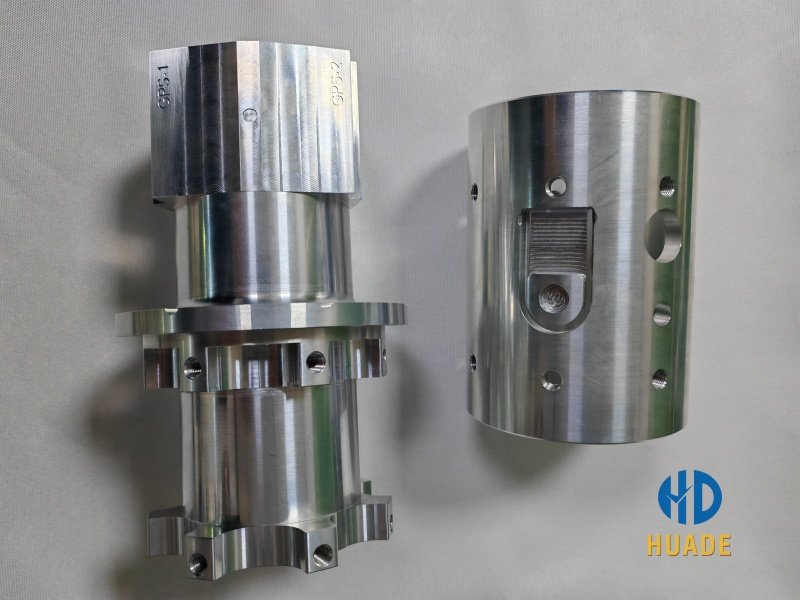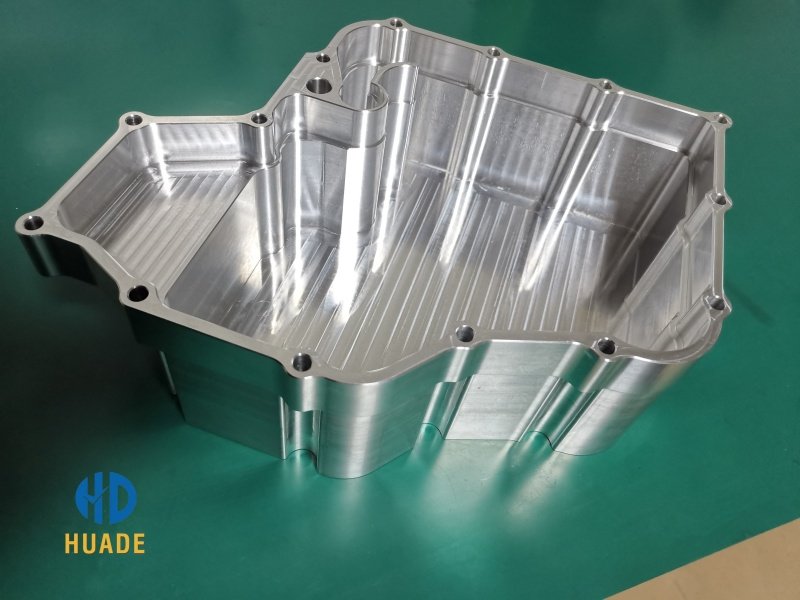Table of Contents
In the automotive sector, where every fraction of a millimeter and every millisecond of a process count, automotive CNC machining has evolved from a simple manufacturing method into a core technology that defines performance and reliability. It is the silent enabler of advancements — from quieter combustion engines to more efficient electric motors.
This guide is written for engineers, designers, and supply chain professionals who want a deeper understanding of automotive CNC machining and precision automotive CNC parts. Our goal is to provide a clear, technical roadmap that shows how this technology is reshaping the future of vehicle manufacturing — unlocking new levels of accuracy, efficiency, and innovation.

1. The CNC Revolution: A Shift from Fabrication to Engineering
Historically, cnc machine automotive parts was viewed primarily as a fabrication method. Today, it is an integral part of the engineering process, empowering designers to create components that were once deemed impossible to manufacture. The introduction of multi-axis machining (5-axis, 7-axis) has been a game-changer. These machines can mill complex geometries in a single setup, eliminating the need for multiple manual repositionings and jigs. This capability allows for the creation of intricate internal cooling channels in engine blocks, complex lattice structures for lightweighting, and fluid-dynamic surfaces that improve performance.
Furthermore, this technological leap is central to efficiency improvements in automotive part production using cnc technology. By consolidating multiple operations into one, we not only reduce cycle times but also eliminate tolerance stack-up errors that occur during part hand-offs between different machines. This streamlining of the manufacturing process is a direct path to higher yield rates and reduced waste. The journey from a digital model to a physical component is filled with intricate challenges. Our guide for engineers provides a deeper dive into CNC Automotive Parts and how to optimize them for production.
2. Materials Science and CNC: A Symbiotic Relationship
The materials used in modern vehicles are as complex as the designs themselves. A deep understanding of material properties is crucial for effective automotive cnc machining.
- Lightweight Alloys: Aluminum and magnesium are mainstays for chassis and engine components. While they offer significant weight savings, their high thermal expansion requires sophisticated tooling and cutting fluid strategies to maintain dimensional stability. We precisely control feed rates and cutting speeds to prevent part distortion and achieve the desired finish on thin-walled sections.
- High-Strength Steels and Stainless Steel: For parts like gears, axles, and suspension components, strength and wear resistance are paramount. Machining these materials, particularly hardened steels, requires specialized carbide tooling and robust machine rigidity to handle high cutting forces without compromising tool life or surface finish. Our approach is to apply optimized cooling strategies to prevent work hardening and ensure material integrity.
- Exotic Alloys: In the high-performance and motorsport segments, materials like Inconel and Titanium are used for their extreme heat resistance and strength-to-weight ratio. Machining these materials presents unique challenges due to their low thermal conductivity, which can lead to rapid tool wear. We employ specific cutting strategies and ceramic tooling to manage heat and ensure a flawless finish.
- Composites and Engineered Plastics: The growing use of carbon-fiber and advanced polymers in vehicle structures and interiors demands specialized CNC techniques. Our capabilities include machining these materials with dedicated dust management systems and diamond-coated tools to prevent delamination and ensure a clean cut.
3. Quality Control: Beyond Inspection, Towards Prediction
In automotive cnc machining, quality control is no longer a post-production activity; it is an integrated, proactive system. Modern practices are shifting from detecting errors to predicting and preventing them.
- In-Process Measurement: Advanced CNC machines are equipped with integrated laser probes and touch probes that perform real-time measurements during the cutting cycle. This allows for dynamic adjustments to toolpaths and offsets, automatically compensating for thermal expansion and minor tool wear. This preventative approach is the foundation of our ability to deliver consistently perfect automotive cnc parts.
- Non-Contact Inspection: After machining, advanced metrology tools take over. We utilize high-resolution 3D scanners and Industrial CT scanning to capture a complete digital twin of the part. This technology is invaluable for inspecting complex internal geometries and detecting hidden defects, such as microscopic porosity in castings, which are impossible to find with traditional methods.
- Data-Driven Quality Assurance: The true power of modern automotive cnc machining lies in its data. Our systems collect vast amounts of data on spindle vibration, tool wear, and machine temperature. By applying machine learning algorithms to this data, we can predict tool failure and schedule preemptive tool changes, drastically reducing scrap rates and maintaining a consistent level of quality for every single part. This predictive capability ensures the reliability of our services.

4. Component-Specific Machining: A Closer Look
Every component has a unique set of challenges. Understanding these specifics is what separates a good machinist from a great one.
- Engine Blocks & Cylinder Heads: The machining of these components requires precise control over flatness and parallelism to ensure a perfect seal. Our cnc machine automotive capabilities allow us to machine intricate internal cooling and oil passages, crucial for engine performance and longevity.
- Suspension & Steering Components: These parts, such as control arms and knuckles, require multi-axis machining to achieve complex geometric profiles while maintaining structural integrity. The precision of these parts directly impacts vehicle handling and safety.
- EV Drivetrain Components: For electric vehicles, new challenges arise. Machining battery trays and motor housings requires expertise in thin-wall machining of lightweight alloys, with a focus on flatness to ensure proper heat dissipation. The concentricity of motor casings is vital for minimizing electromagnetic flux leakage, directly impacting a vehicle’s efficiency. For a more detailed look at how to achieve flawless execution for critical components, explore our guide on CNC Machined Automotive Components.
5. Applications of Automotive CNC Machining: From Prototypes to Mass Production
Automotive CNC machining is not limited to high-performance or luxury vehicles — it plays a vital role across every stage of modern automotive manufacturing. From concept development to end-of-line assembly, precision-machined automotive CNC parts ensure durability, safety, and consistency.
Prototyping and R&D:
CNC machining provides unparalleled flexibility for rapid prototyping. Engineers can iterate designs quickly, testing aerodynamics, fit, and performance before investing in expensive molds or dies. This capability reduces product development time and accelerates innovation cycles.
Low-Volume Production:
For motorsports, electric vehicle startups, and customization-focused manufacturers, CNC machining enables small-batch production of unique parts such as suspension arms, differential housings, and battery brackets. Each part maintains consistent tolerances even in short runs.
Mass Production Integration:
In large-scale automotive manufacturing, CNC-machined parts are essential for producing molds, dies, and precision fixtures that drive automated assembly lines. These components ensure that every vehicle produced meets identical quality and dimensional standards.
As the automotive industry evolves toward electrification and lightweight design, CNC machining continues to serve as the backbone of innovation — bridging the gap between engineering precision and scalable production.
Conclusion: Your Partner in Automotive Innovation
The landscape of automotive manufacturing is more demanding than ever. The integration of advanced materials, intelligent quality control, and sophisticated machining techniques is no longer optional—it’s essential. Our expertise in automotive CNC machining and comprehensive automotive CNC machining services are designed to help you navigate this complexity with confidence.
At Dongguan Huade Precision Manufacturing Co., Ltd., we go beyond delivering precision parts — we provide complete CNC manufacturing solutions tailored to your automotive projects. From concept design to production and final inspection, every component we make reflects accuracy, reliability, and efficiency.
If you are exploring new possibilities in precision automotive CNC machining or seeking a dependable partner for your next project, we’d love to hear from you.
👉 Fill out the form below to share your requirements, and our engineering team will get back to you within 24 hours with customized solutions that fit your needs perfectly.
